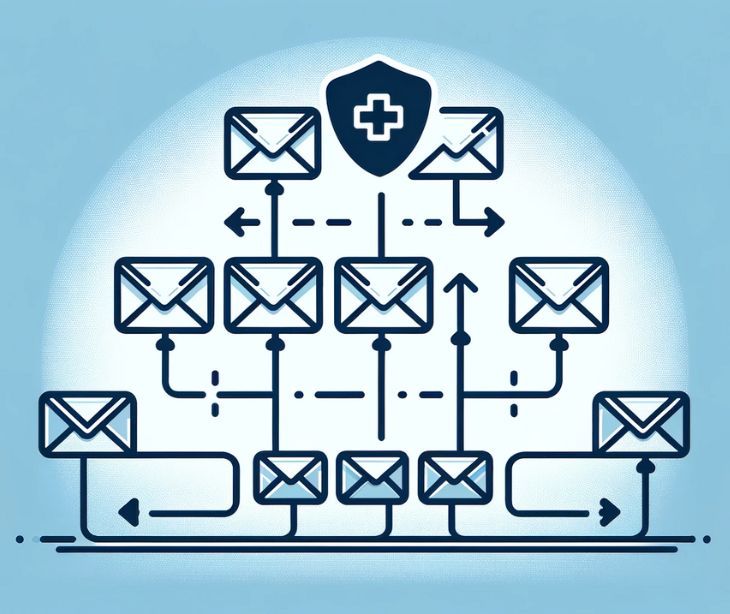
Drip email campaigns offer a practical way to stay connected with patients. These automated emails can provide important health information, reminders, and updates at just the right time without needing staff to manually send them. By using drip campaigns, healthcare providers can improve patient engagement, and with a HIPAA compliant email marketing tool, these emails can include protected health information (PHI), too.
Table of contents:
- What is a drip campaign?
- How to set up a drip campaign
- Personalization in healthcare drip campaigns
- Why healthcare marketers should use drip campaigns
- Healthcare drip campaign use cases
- Examples of personalized healthcare emails
- Take the next step in HIPAA compliant email automation
What is a drip campaign?
Note: Drip campaigns are often dubbed email automation - the terms are interchangeable in most contexts.
Drip email
A drip email is a pre-written, automated message sent to recipients as part of a larger email marketing strategy. These emails are typically sent to patients based on specific triggers or time intervals and are designed to provide relevant information, reminders, or calls to action at the most appropriate moment.
Drip campaign
A drip campaign is a series of drip emails that are automatically sent out to a targeted group of recipients over a period of time. The campaign is structured to follow a predefined sequence, with each email building upon the previous one.
The point of a drip campaign is to engage, inform, or persuade recipients through consistent and personalized communication tailored to their specific needs or actions (like signing up for a service, undergoing a medical procedure, or requiring regular health updates).
Are drip campaigns effective?
Paubox analyzed over 2 million emails from over 100 healthcare organizations to uncover healthcare email marketing benchmarks.
Drip campaigns outperformed marketing emails regarding click-through rates (CTR) with a CTR of about 5.00%, nearly double the 2.74% CTR for marketing emails.
How to set up a drip campaign
A drip campaign is managed and sent using a platform like Paubox Marketing. Here's how it typically works:
- Setup: Initially, you create a series of emails tailored to specific purposes, such as welcoming new patients or following up after appointments. This involves crafting the email content and designing the sequence in Paubox.
- Automation: The campaign runs automatically. Paubox sends your emails at a specific time interval once a recipient is added to the campaign. In other words, when a patient is added to the "new patient" list, they'll receive the emails sequentially.
- Consistency and Compliance: With Paubox managing the campaign, each email is sent out consistently and on time. You don't need to manually send each email, saving time and reducing the risk of errors. Plus, Paubox's focus on healthcare means your communications always comply with industry regulations.
Tutorial: Build a drip campaign
Personalization in healthcare drip campaigns
When PHI can be securely included in emails, the level of personalization in drip campaigns can be significantly enhanced. This means emails can contain specific health information tailored to each patient's needs and medical history, making the communication more relevant and valuable.
To ensure patient privacy and adhere to legal requirements, any use of PHI in emails must comply with HIPAA. To ensure full compliance, healthcare marketers must use an email service capable of encryption and be willing to sign a business associate agreement (BAA).
HIPAA compliance in email marketing requirements:
- Consent and opt-in procedures: Get explicit patient consent to receive healthcare-related email communications
- Email encryption: Secure email services (like Paubox Marketing) offer advanced encryption and security features that protect email content during transmission, safeguarding the data from unauthorized access.
- Business associate agreements (BAAs): When healthcare organizations use third-party email marketing services, these service providers must sign a BAA.
- Employee training and compliance checks: The marketing team must be well-versed in HIPAA regulations and email marketing compliance practices.
Why healthcare marketers should use drip campaigns
- Continuous patient engagement: Drip campaigns maintain ongoing engagement with patients. Regular, targeted emails keep patients consistently informed and connected to their healthcare journey.
- Patient education: Drip campaigns serve as an excellent tool for patient education. They can systematically provide valuable information about health conditions, treatment options, and preventive care.
- Improving patient care and outcomes: Drip campaigns can positively impact patient care and health outcomes by providing timely and pertinent information. For example, a drip email reminding patients to take their medication or prepare for an upcoming surgery can contribute to successful treatment.
- Time-saving efficiency: Once the initial setup is complete, the campaign runs automatically, delivering messages without requiring manual input for each individual email.
Healthcare drip campaign use cases
Below is a list of common use cases showcasing how email automation can enhance patient care and engagement.
- Welcome series for new patients: Introducing new patients to the healthcare practice, providing essential information about services, staff, and what to expect.
- Appointment reminders: Automated reminders for upcoming appointments, check-ups, and follow-up visits.
- Post-appointment follow-ups: Engaging patients after appointments with care instructions, satisfaction surveys, or next steps in their treatment plan.
- Medication adherence reminders: Reminding patients to take medications or refill prescriptions.
- Chronic disease management: Sending regular tips and information relevant to managing chronic conditions like diabetes, hypertension, or asthma.
- Preventive care alerts: Informing patients about preventative care measures, such as vaccinations, screenings, and lifestyle tips.
- Seasonal health tips: Sharing information relevant to specific seasons, like flu season reminders or summer health tips.
- Patient education series: Providing ongoing educational content about specific health topics, procedures, or wellness strategies.
- Recovery and rehabilitation information: Offering guidance and support for patients recovering from surgery or undergoing rehabilitation.
- Insurance and billing information: Communicating about insurance updates, billing processes, or payment reminders.
- Patient satisfaction surveys: Gathering feedback on patient experiences to improve service and care.
Examples of personalized healthcare emails
New patient welcome drip campaign
Day 1: Welcome to Harmony Health & Wellness Clinic!
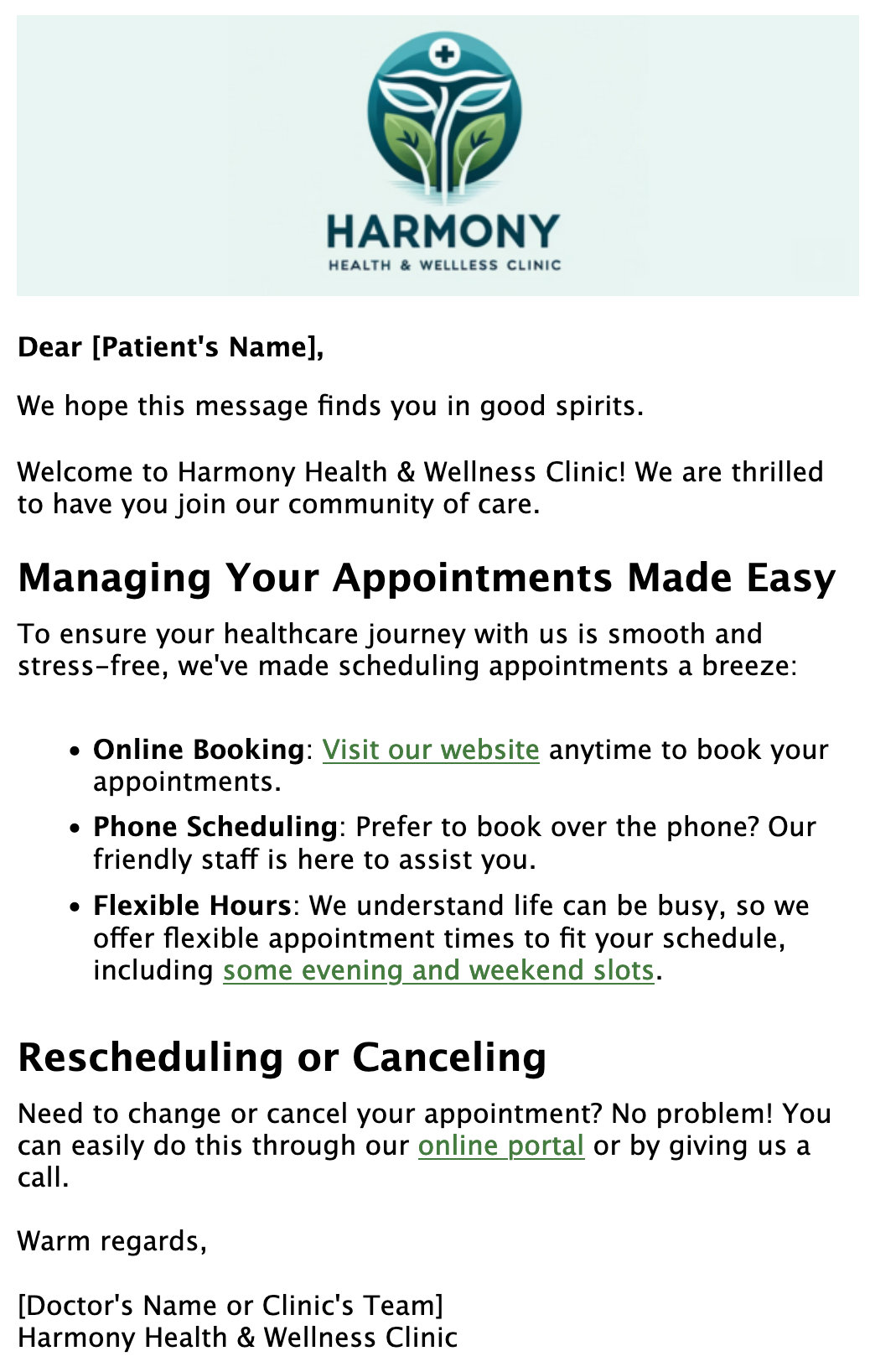
Day 2: Your privacy and wellness resources at Harmony Health & Wellness
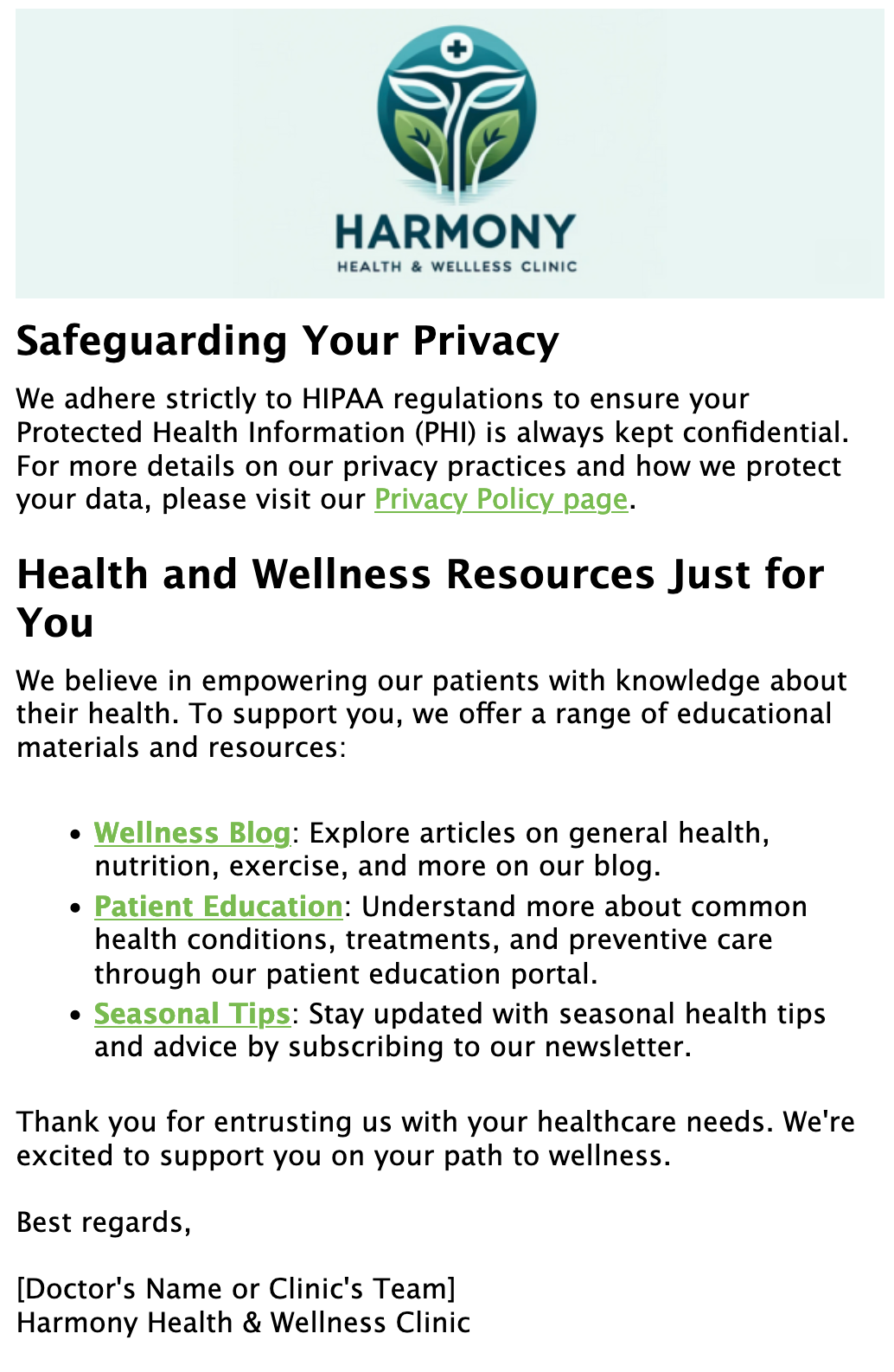
Day 5: Meet your Harmony Health & Wellness Care team
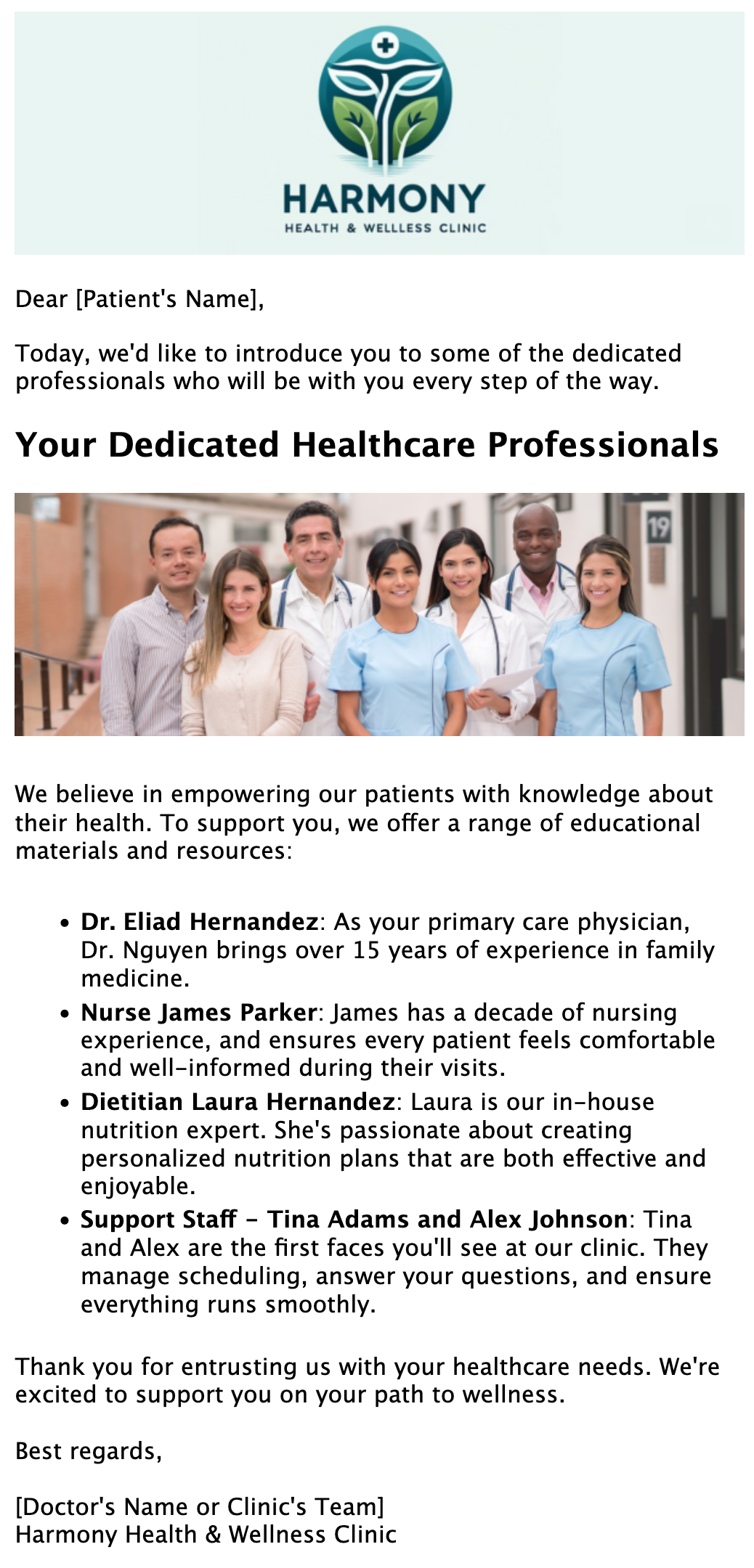
Post-knee surgery drip campaign
Day 1: Important care instructions after your knee surgery
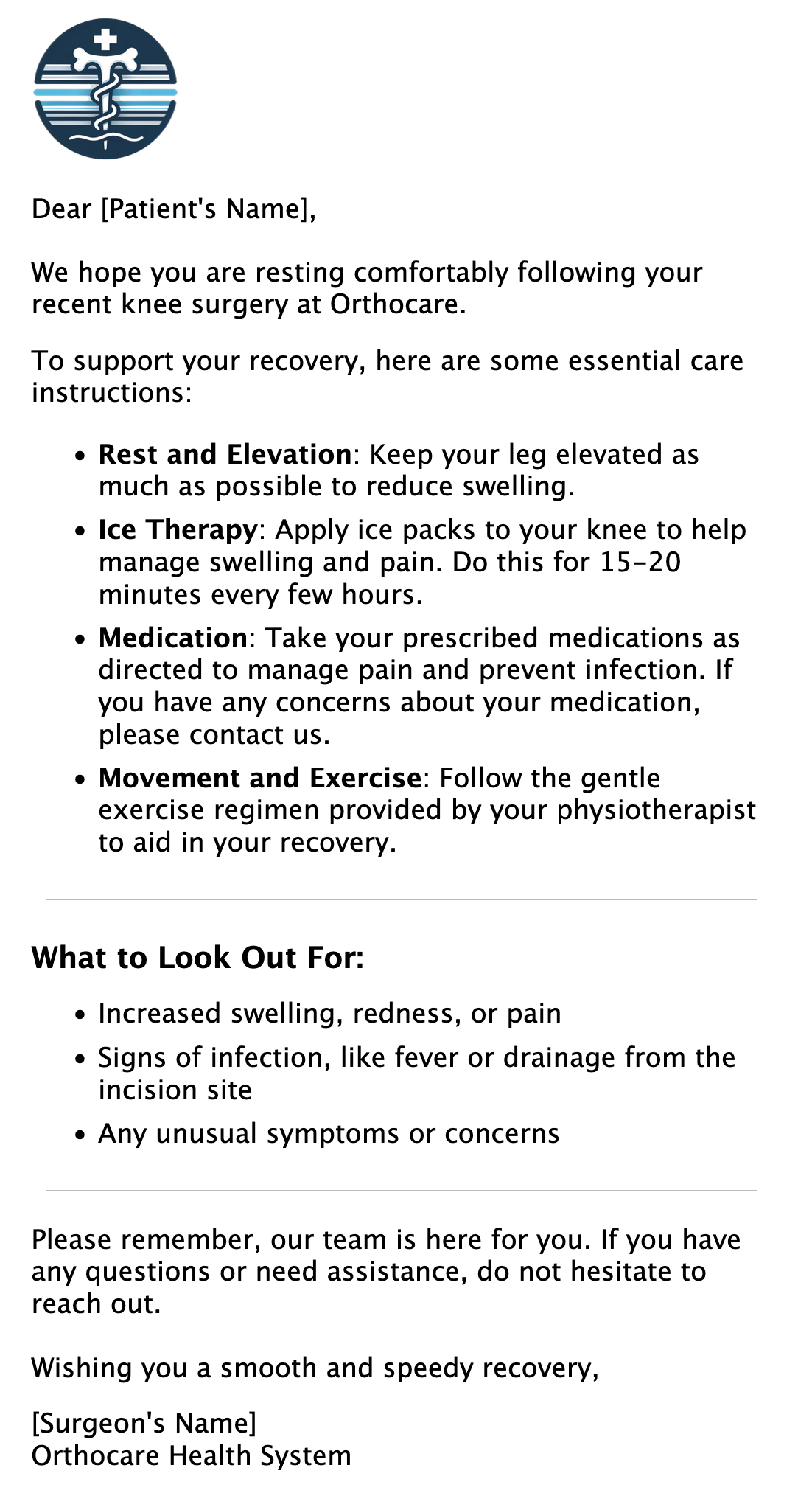
Day 8: Your post-knee surgery check-up reminder
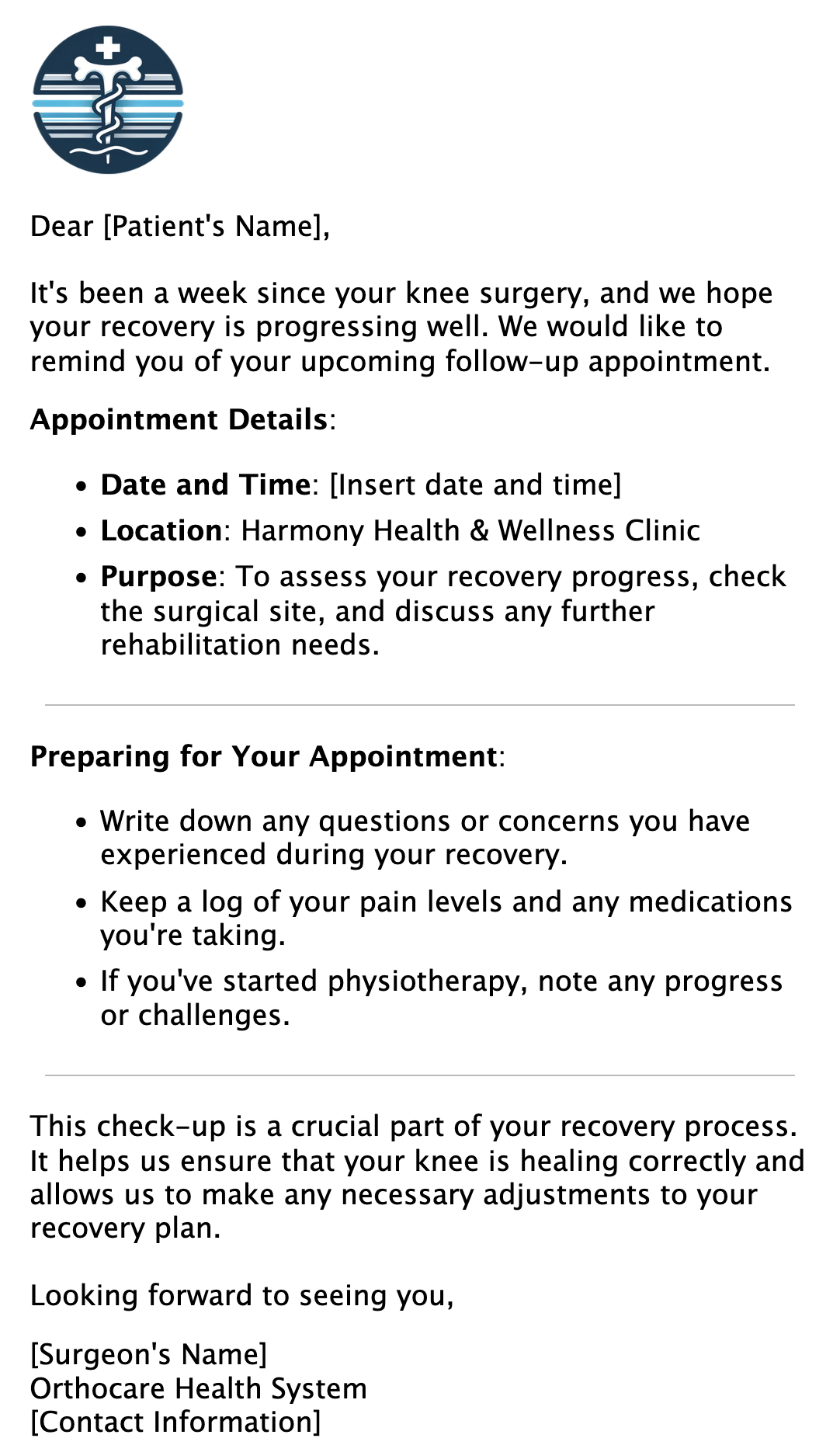
Annual information update reminder
Day 365: Keeping your information up-to-date
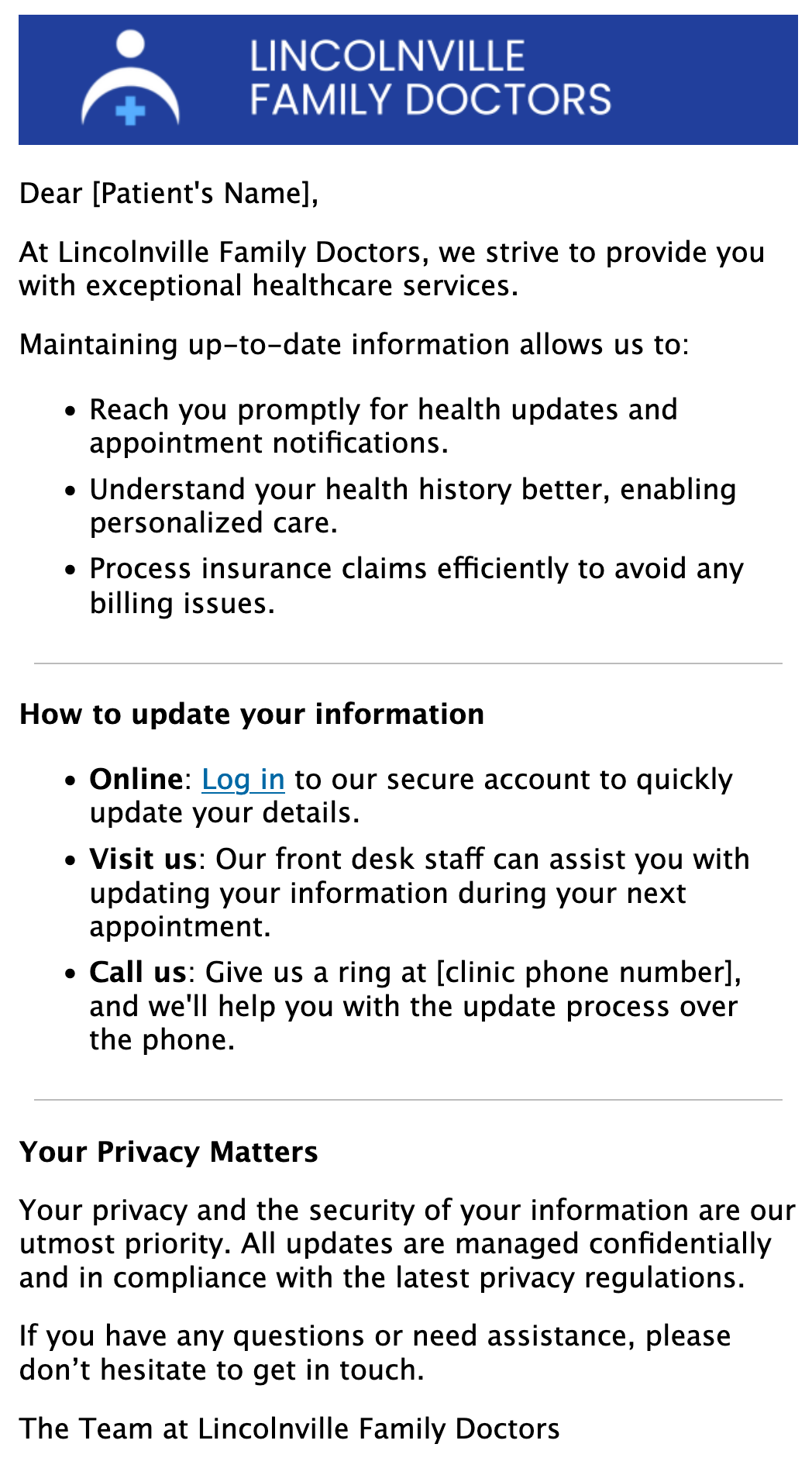
Take the next step in HIPAA compliant email automation
The power of drip campaigns in healthcare communication lies in delivering timely, relevant, and personalized content. Automated email sequences can significantly enhance patient engagement and satisfaction.
What's next: Take the insights and examples in this blog post as your starting point. Whether you're welcoming new patients, providing post-procedure care instructions, or sending health tips, each drip email is an opportunity to build trust and deepen your relationship with your patients.
Subscribe to Paubox Weekly
Every Friday we'll bring you the most important news from Paubox. Our aim is to make you smarter, faster.

 Dean Levitt
Dean Levitt


